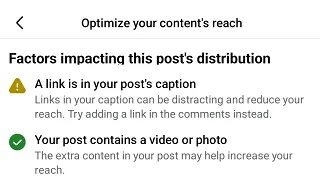Meta
- Multiple choice questions
- Optimize for conversions on site and in form at the same time
- Turn off autofill (no more old contact data?)
- SMS verification
- Form layout optimized to each user
- Promo codes
- Custom events based on post-form fill actions that signal a quality lead
- Change who performs the action
- “Changing who performs the action is rarely about targeting. Impact the people you attract with your ad copy, creative, and offer. Create form questions that apply to your ideal lead. You might even use conditional logic to kick out people who don’t qualify.”
- Question quality
- consider open-ended questions that aren’t easily answered with a yes/no or checkbox
- add conditional questions
- Optimize Landing Page > Confirmation Page > Outreach flow
- A bit on Conversion Leads optimization
- “When this is selected, Meta’s focus will be on finding people who perform other goal actions after submitting your form. To do this, you first need to define your funnel for Meta, which can be a long, frustrating process.”
- A bit on form types
- “More Volume” will be the most streamlined, making it as easy as possible to complete the form with the fewest steps.
- “Higher Intent” will require an additional confirmation step. While the difference may not be significant, it can impact quality.
- “Rich Creative” allows you to add more information to your form like social proof, incentives, and a product feed.
It appears Meta’s Advantage+ Shopping Campaigns will be dead early next year.
Start building your Advantage+ Sales Campaigns now and let them run alongside until you’re ready to pivot on your timeline.
Also on Bluesky
Meta is growing its smart glasses lineup 🕶️
Another name brand partnership, this time geared towards a different consumer. Clearly there is revenue here.
Like the existing Meta Ray-Ban glasses, the Oakley model features a front-facing camera, along with open-ear speakers and microphones that are built into the frame. After they are paired with a phone, the glasses can be used to listen to music or podcasts, conduct phone calls, or chat with Meta AI. By utilizing the onboard camera and microphones, Meta AI can also answer questions about what someone is seeing and even translate languages.
Also on Bluesky
Turns out Meta is like X and LinkedIn, it doesn’t want your links in the main post.
Users have reported seeing the following message when preparing to post a link in Facebook page posts:

Maybe that means that you should be including all of your post links in the first comment, and an image in the main post, which is what many high-performing publishers on Facebook are currently doing.
Also on Bluesky
If you’ve been paying attention, this isn’t a surprise
Using the ad tools Meta is developing, a brand could present an image of the product it wants to promote along with a budgetary goal, and AI would create the entire ad, including imagery, video and text. The system would then decide which Instagram and Facebook users to target and offer suggestions on budget
Meta also plans to enable advertisers to personalize ads using AI, so that users see different versions of the same ad in real time, based on factors such as geolocation
Are artisanal, hand crafted ads the future zig?
via WSJ
Also on Bluesky
Loomer on Lead Forms
Jon Loomer has been writing a lot about Meta Instant Forms lately, so here’s a round up of recent test features and ideas on improving lead quality.
Recent updates / tests:
How to improve quality (list of 16 ideas):
Also on Bluesky

